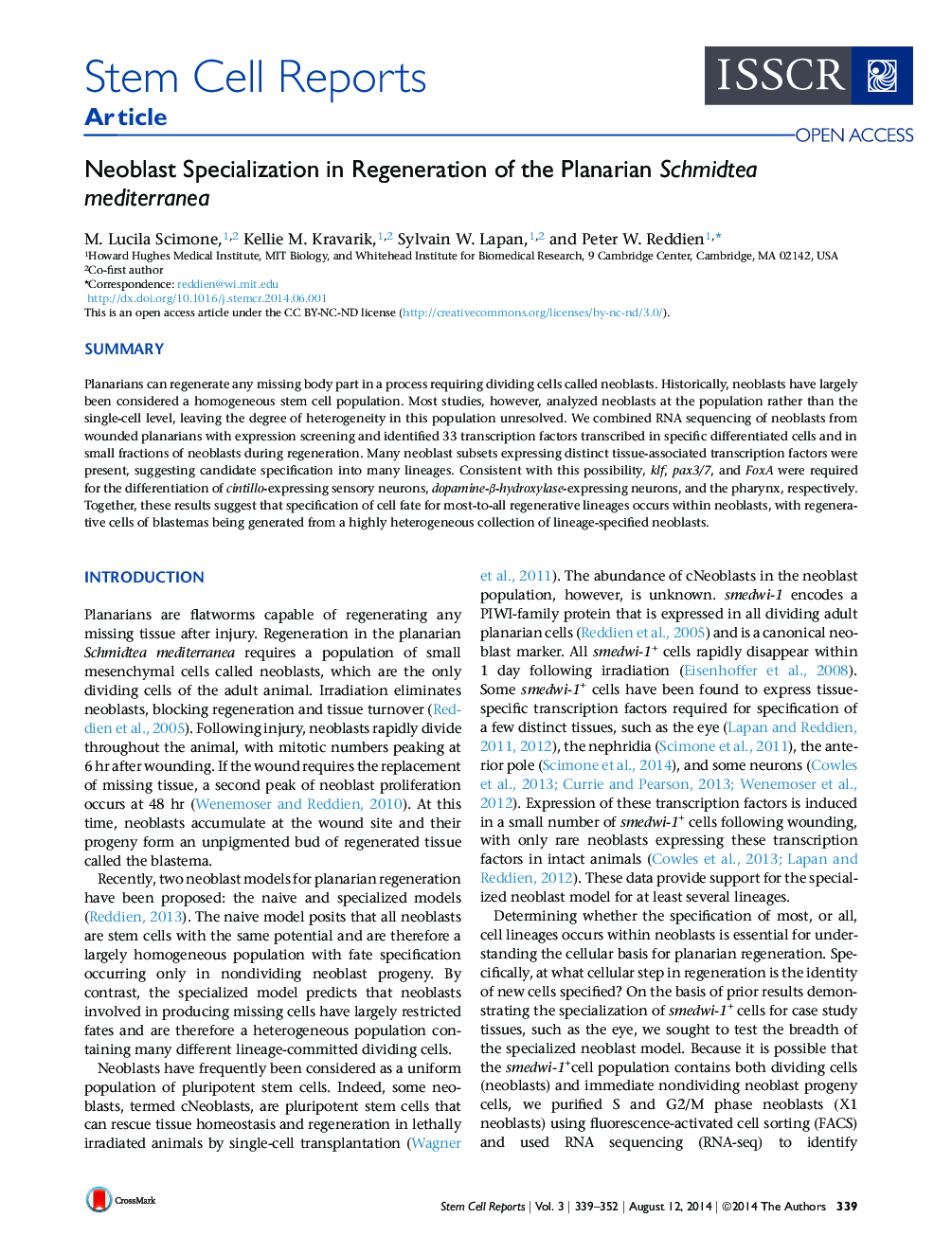| Article ID | Journal | Published Year | Pages | File Type |
|---|---|---|---|---|
| 2093597 | Stem Cell Reports | 2014 | 14 Pages |
•Forty-one transcription factors are expressed in subsets of planarian neoblasts•Specific combinations of transcription factors mark different neoblast subsets•Specific cell-type regeneration failures follow transcription factor RNAi•The neoblast population contains many specified progenitors after wounding
SummaryPlanarians can regenerate any missing body part in a process requiring dividing cells called neoblasts. Historically, neoblasts have largely been considered a homogeneous stem cell population. Most studies, however, analyzed neoblasts at the population rather than the single-cell level, leaving the degree of heterogeneity in this population unresolved. We combined RNA sequencing of neoblasts from wounded planarians with expression screening and identified 33 transcription factors transcribed in specific differentiated cells and in small fractions of neoblasts during regeneration. Many neoblast subsets expressing distinct tissue-associated transcription factors were present, suggesting candidate specification into many lineages. Consistent with this possibility, klf, pax3/7, and FoxA were required for the differentiation of cintillo-expressing sensory neurons, dopamine-β-hydroxylase-expressing neurons, and the pharynx, respectively. Together, these results suggest that specification of cell fate for most-to-all regenerative lineages occurs within neoblasts, with regenerative cells of blastemas being generated from a highly heterogeneous collection of lineage-specified neoblasts.
